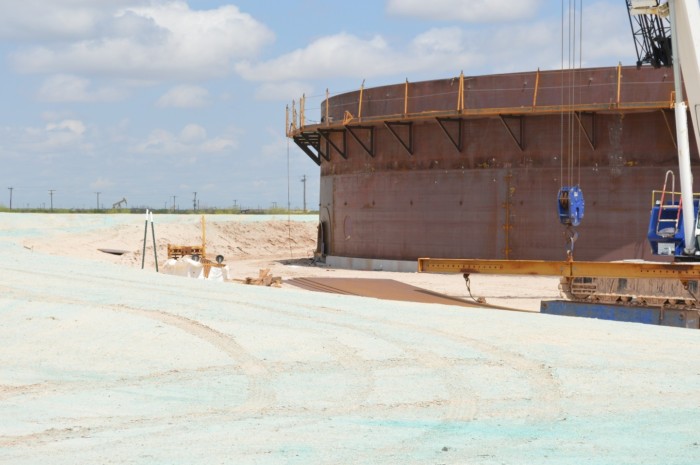In the first part of this series, we will discuss initial phases of design and construction inspection for storage tank construction.
The Concept
As you lay out of your tanks, whether they are in a grid, located along a specific topographic contour, or simply organized to fit to the shape of your property, you will start to see a picture of what your tank farm will eventually look like. Of course, you will also consider tank size, how the product will enter and exit the tanks, and how much they will weigh once in use. As you plan, do you think about how the tanks will move once built? Unless the tanks bear on rock, they will move. Yes, move. Different types and sizes of tanks will experience different patterns of settlement, but all tanks (on soil) will move. Settlement is one of the key factors in tank design and should be accounted for in the design and construction planning.
Why Geotechnical Engineering?
Geotechnical engineers will play a significant role during the design and construction of ground storage tanks. The objective of the geotechnical engineer is to identify how to adequately support the tank structures and estimate the likely soil/structure interaction. Geotechnical engineers will use a variety of tools and techniques to achieve this goal. Since different tank designs have different support requirements, we work closely with the owner and tank designer to identify the performance requirements and the feasible foundation options. Of course, the options must be both practical and feasible while meeting the project requirements. And the recommendations must take constructability into account – we do not want solutions that have to be “wished into place”!
Constructions Begins!
Construction materials testing (CMT) teams should be engaged at the very beginning of these teaming opportunities. Over the years, we have found that participating in the initial project meetings while priorities and schedules are outlined is invaluable to the process of testing and documentation that needs to take place. Engaging in meetings up front, being part of the planning process and becoming an integral part of the construction team is our goal on every project. It will not be long after the initial meetings that the project will start to come alive.
After equipment arrives – this will include bull dozers, track hoes, front end loaders, scrapers, compactors, and more – you can expect a flurry of safety training and badge issues to arise to address who requires access to what. It is imperative to start your CMT sampling and testing early on, due to these tests taking some time to perform in our laboratory. Some of these initial tests can take more than a week to yield results. CMT technicians will collect soil, sand, and rock samples to compare to the specifications based on geotechnical data and provided recommendations. Once back in our in-house laboratory, these materials will be run through sieves, pounded into metal sleeves at different moisture contents to determine the optimum weights and moisture levels for each material type, and washed to remove silt and clay. For these materials, moisture content should be determined where the materials are plastic (holding together just enough), liquid (moving just the right amount with regulated manipulation) and classified using the difference between those two percentages. A chemist will run tests on the sand to determine if it meets the corrosivity requirements and lab technicians will run aggregate through a variety of sieves to ensure that grading requirements are met.
Once the samples have been tested, and reports have been sent out, reference samples can then be used to start testing material in the field for moisture content and compactive effort. Communication with the entire project team is key to ensuring that all materials are tested, and the documentation is thorough.
